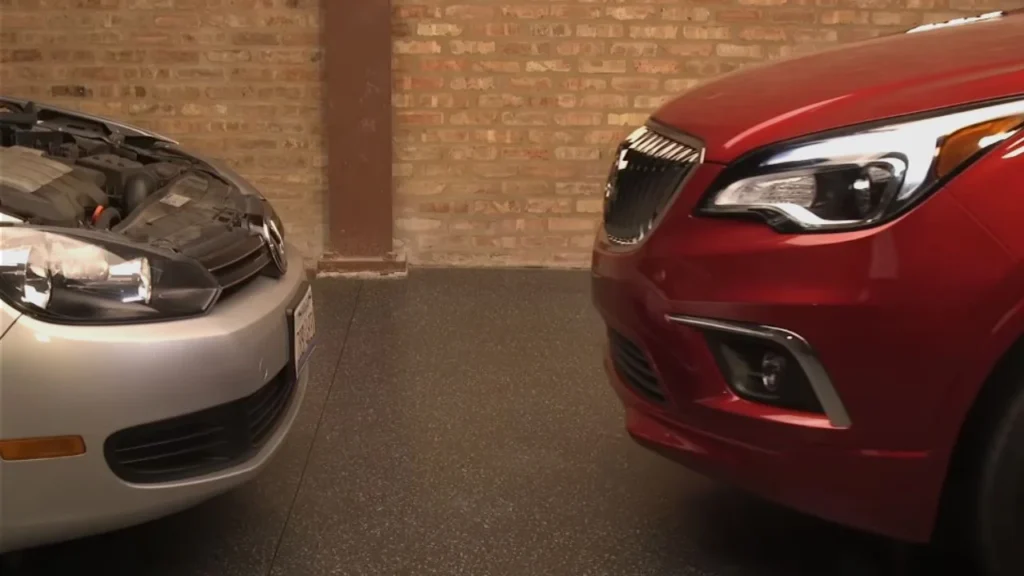I’ve been there before—stuck with a car that won’t start, feeling frustrated and clueless. Learning how to jump start a car with battery is a skill every driver should know. Did you know that 68% of drivers rely on roadside assistance for this? With just a 15-minute effort, you can easily get back on the road yourself! Looking for a reliable jump starter brand? Check out our review of the Top Vision jump starter for a comprehensive analysis of its features and performance.
Follow the steps carefully, and you’ll avoid damaging your car’s system. Most modern cars have a 12V battery; with the right knowledge, you can handle this like a pro. Let’s dive in and get you confident for next time! For recommendations on the most powerful jump starters to keep handy, check out this guide.
Quick Look
To jump-start a car, first connect the red jumper cable to the positive terminal of the dead battery, then to the positive terminal of the working battery. Next, attach the black cable to the negative terminal of the working battery and the other end to an unpainted metal surface on the dead car. Start the working car, wait a few minutes, then start the dead car.
Can I jump-start my car with any vehicle?
You can’t jump-start your car with just any vehicle. The donor vehicle must have a battery with the same voltage as yours—most cars use a 12-volt battery. Using a vehicle with a different voltage, like certain heavy-duty trucks or motorcycles, can damage both vehicles’ electrical systems. For more information on portable car battery chargers and jump starters, check out this comprehensive guide.

Also, be cautious with hybrid or electric vehicles. These cars often have specialized batteries that require different handling. Hybrid vehicles typically have a separate 12-volt battery for jump-starting, but always consult the manual before attempting to jump-start any hybrid or electric vehicle.
If you’re unsure about the power needed for a jump starter, our detailed guide on what is a good power for a jump starter will help you choose the right one for your vehicle.
Materials Needed
Let’s get straight into what you’ll need before jump-starting a car. Gathering the right tools beforehand ensures everything runs smoothly, and you’re not scrambling at the last minute. Here’s a simple breakdown of what to have on hand. If you’re looking to jump-start a motorcycle, check out this step-by-step guide.
- Jumper cables: Make sure they are at least 10-12 feet long and insulated to avoid electrical hazards.
- A working vehicle: The donor car should have a 12-volt battery and must be fully charged.
- Gloves and eye protection: These are optional but recommended to protect yourself from any battery corrosion or leaks.
- Car manual: Especially useful for newer cars with specific battery layouts or grounding points.
Step-by-Step Guide: How to Jump Start a Car with Battery?
Let’s dive into the exact steps you’ll need to follow to jump-start a car with a dead battery. Don’t worry; it’s a simple process that anyone can handle with a bit of patience and the right tools.
Step 1: Position the Vehicles
First things first, you need to get the cars in place. Ideally, the vehicles should be about 2 to 3 feet apart but not touching each other. Make sure both cars are turned off, the parking brakes are on, and both in “Park” or “Neutral” if you’re driving a manual. For a list of the best battery pack jump starters to keep handy, check out this guide.

Positioning is key because the jumper cables need to reach both batteries easily. Keep them aligned nose-to-nose or side-by-side, whichever is more convenient for the situation. It’s also a good idea to double-check that you’re in a safe, level spot with enough room to move around.
Step 2: Identify the Battery Terminals
Now, let’s find those battery terminals. The positive terminal is usually marked with a “+” symbol and may have a red cover. The negative terminal will have a “–” symbol and typically a black cover. These are the points where we’ll attach the cables.

Before doing anything, give both batteries a quick visual check. If you spot any corrosion (that white powdery stuff), use a brush or cloth to clear it off. If either battery looks damaged or swollen, stop right there—you don’t want to mess with a faulty battery!
Step 3: Connecting the Jumper Cables
Alright, here’s the crucial part. First, grab your red jumper cable and attach it to the positive terminal on the dead battery. Next, connect the other end of the red cable to the positive terminal on the working battery. This is step one in transferring that precious charge!

Now, take the black jumper cable and clip it onto the negative terminal of the working battery. The last step is to attach the other end of the black cable to an unpainted metal part of the dead car’s engine block—somewhere far from the battery. This prevents sparks and keeps things safe.
Step 4: Start the Cars
Now, the exciting moment—time to start the cars! First, turn on the engine of the car with the good battery and let it run for 1 to 2 minutes. This will give the dead battery a little boost to help it wake up.
Then, head over to the car with the dead battery and try starting it. If it doesn’t start right away, don’t panic! Wait for another minute or two and give it another shot. In most cases, this will do the trick, and you’ll hear the engine roar back to life.

Step 5: Disconnecting the Cables
Once the dead car starts running, it’s time to disconnect the cables. You’ll do this in reverse order. First, remove the black clamp from the metal surface on the dead car. Then, take off the black clamp from the working battery.

Next, remove the red clamp from the working car, followed by the red clamp from the car that was dead. Be careful not to let the clamps touch each other or any metal surfaces to avoid sparks!
Step 6: Aftercare
Now that your car is running, you’re not quite done. Drive the car around for at least 20 to 30 minutes to let the alternator charge the battery. If you turn it off too soon, it might die again, and no one wants to jump a car twice in one day!

If the battery dies again quickly after this, it’s probably time to get it tested. Many auto shops can run a diagnostic test to check if it’s time for a replacement. Can you jump-start a car with a bad starter? Learn more about the possibility and the risks involved in our article on jump-starting a car with a bad starter.
What should I do if my car doesn’t start after a jump?
If your car doesn’t start after a jump, the first thing to do is double-check the connections. Ensure that the jumper cables are securely attached to the correct battery terminals. Sometimes, a loose connection can prevent the battery from charging properly.
Next, give the donor car more time to charge your battery. Let it run for an additional 5-10 minutes before trying to start your car again. This allows the dead battery to gain enough power to turn over the engine.
If the car still won’t start, inspect the battery terminals for corrosion or dirt that may be blocking contact. If everything seems fine, the problem may be with the alternator or the battery itself, in which case professional help might be needed.
If you drive a diesel vehicle, it’s important to have the right jump starter. Discover the best options in our guide on the best jump starter for diesel engines.
Is it safe to jump-start a car in the rain?
Yes, it is safe to jump-start a car in the rain, as long as you follow the correct steps. Car batteries run on 12 volts, which isn’t strong enough to cause electrical shock even in wet conditions. The real danger comes from mishandling the cables and causing sparks.
When jump-starting in the rain, make sure the jumper cables don’t touch each other or any metal parts. It’s also smart to wear dry gloves and avoid standing in large puddles. Keeping the battery area as dry as possible will reduce potential risks.
For more tips on how to jump-start a car in the rain, check out this article for additional guidance. It explains how rain doesn’t make the process dangerous if done correctly. Just stay cautious and handle the cables with care.
Safety Guide
Safety is the most important part of jump-starting a car. Trust me, you don’t want to risk an electrical shock or damage to your vehicle. So, here are a few things I’ve learned over the years that will keep you safe while getting your car back on the road.
- Avoid damaged batteries: About 70% of car battery failures are due to internal issues. If the battery is cracked, leaking, or swollen, skip the jump-start and replace it.
- Ensure good ventilation: You’ll be running two vehicles, so avoid enclosed spaces to prevent carbon monoxide poisoning. In the U.S., 400 people die each year from carbon monoxide, so this is no small issue.
- Remove metal objects: Rings, watches, and bracelets can conduct up to 10 amps of electricity. If they accidentally touch the battery terminals, they can cause serious burns or shocks.
- Jump-starting in the rain: Don’t worry if the weather’s bad. With only 12 volts of power from the battery, jump-starting is safe in wet conditions as long as you follow the basic steps.
- Cable disconnection order: When it’s time to disconnect the jumper cables, always remove them in the reverse order they were attached—starting with the black (negative) cable, then the red (positive). This reduces the risk of sparks and protects your car’s electronics.
Final Words
Jump-starting a car might seem daunting, but it’s straightforward if you know the steps. I always keep jumper cables handy and recently invested in a portable jump starter—trust me, it’s a lifesaver. Driving for 20-30 minutes after the jump allows your battery to recharge fully.
If you ever wonder how to jump car with portable battery, remember it’s a safe and efficient alternative, especially when no one else is around to help. Stay prepared, and you’ll never be stuck!




